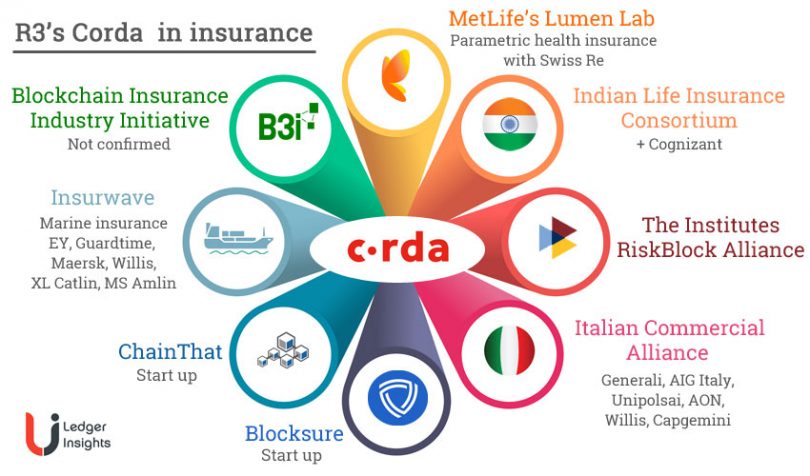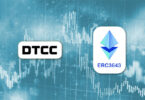Two weeks ago at the start of the Blockchain in Insurance Summit, there were questions from the audience about which technology they should use. But the responses were never definitive.
By the end of the symposium, a member of the audience observed Corda’s popularity and asked whether the organizers might consider renaming the event to ‘Distributed Ledger Technology in Insurance Summit’. This was a nod to the fact that Corda isn’t technically a blockchain.
At the back of the room, R3’s Ryan Rugg piped up: “You could call it Corda for Insurance.” And everyone laughed.
Why Corda?
From talking to various users, the reasons for the shift boils down to architecture. They find Corda more flexible especially for permissions and the skillset is closer to the Java skills used by enterprises. Plus Corda is built for interoperability.
Benefits for the industry
With multiple blockchain consortia, there’s a risk of creating new silos. Integration is always painful and often expensive. If most of the blockchain initiatives use Corda, interoperability should be relatively straightforward.
The complexities of interoperability between different blockchains are often not appreciated. It’s not just a matter of integrating two sets of data. Hyperledger Fabric and Corda have different designs, including the permissions to access data. That said, some technologists have told Ledger Insights that they don’t see this as a big issue.
But if most blockchain apps are on Corda, it’s not a concern. Say an insurance company has a policy on RiskBlock’s blockchain and a reinsurance excess of loss (XOL) contract on the B3i blockchain. They could have both applications talking to each other on the same node (server).
The domino effect
Just a few months ago, the technologies used by the insurance industry were quite fragmented. The major options were Ethereum, the Quorum Ethereum flavor, R3’s Corda, and Hyperledger Fabric.
The domino effect started with the smaller players shifting first.
Startup ChainThat has tried them all. They went as far as to create an entire layer of software (middleware) so that they weren’t tied to any one platform. But that’s significant extra work others wouldn’t be keen on. At the end of last year, they settled on Corda.
Another London-based startup Blocksure used Quorum until early this year. They switched as well.
Swiss Re and MetLife’s Lumen Labs in Singapore chose Corda for their innovative parametric health application. Same for the Italian commercial insurance consortium.
EY and Guardtime created the InsurWave platform which launched with Maersk as the first client. Also Corda.
In India, thirteen local insurers have developed a life insurance project with Cognizant using Corda.
The big consortia
When it comes to blockchain and insurance, the two major consortia are B3i and RiskBlock.
The RiskBlock Alliance supports Corda, Hyperledger Fabric, and Ethereum. However, they have a two-tier blockchain, and currently the main one uses Ethereum. It’s rumored they’re about to announce a switch to Corda.
A few weeks ago, B3i which based its recent pilot on Hyperledger Fabric, acknowledged they were experimenting with R3’s Corda. They haven’t announced a change. However, at the Blockchain in Insurance Summit, B3i’s move to Corda seemed to be common knowledge. (Update: the change to Corda is confirmed.)
Sylvain de Crom, B3i’s Chief Product Officer, would not confirm a switch. However, he told Ledger Insights “if everybody is using the same standards it will make life a lot easier.”
He elaborated that common standards and technology would mean a bigger pool of people with a shared skill-set in the industry. And people will want training in the same technologies because that’s where the job opportunities will be.
Not a clean sweep
De Crom doesn’t think everyone will adopt the same technology. “This is an industry that traditionally just really like to have many different systems.”
Although RiskBlock is changing their core blockchain, they continue to support the popular permissioned blockchain flavors.
Marsh is working on a Proof of Insurance application with IBM based on Hyperledger Fabric.
Last year Allianz Global Corporate & Specialty (AGCS) created a Proof of Concept with EY for the captive insurance market using Hyperledger Fabric.
The French Federation of Insurers is working with the French-based Stratumn platform.
Startup Etherisc uses Ethereum, and Galileo Platforms in Hong Kong is building an entire back office system based on Quorum.
While de Crom wouldn’t confirm any decision re Corda he commented re R3 “Can they stop and start sleeping now? Absolutely Not. They’re working very hard to make it even better.”
And given the daily announcements about new technologies, everyone has an eye on the next big thing.
But for today in insurance, the winner is R3.






